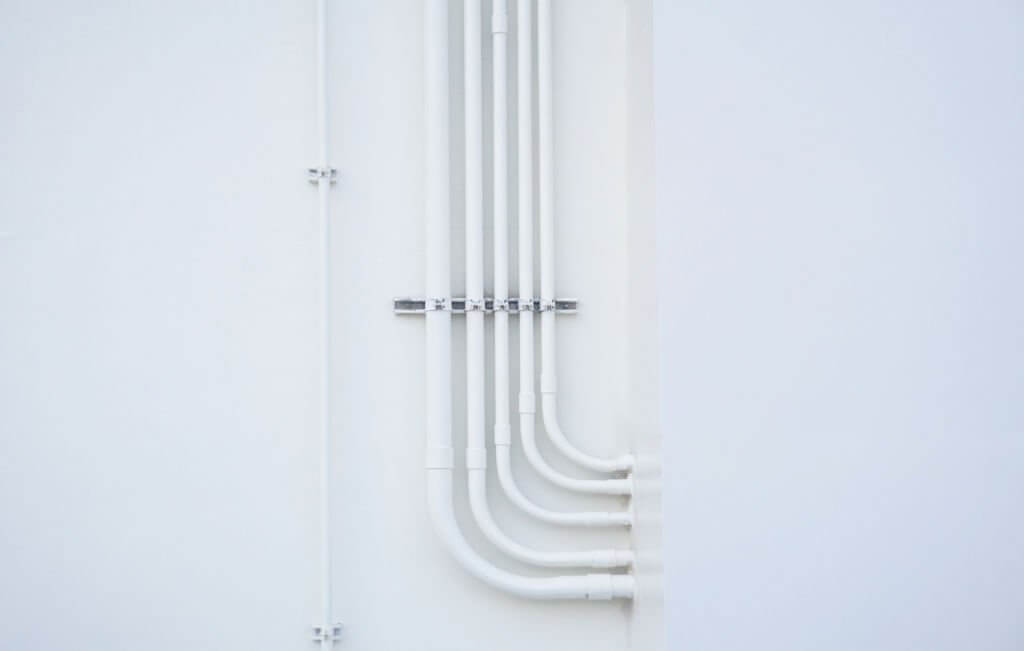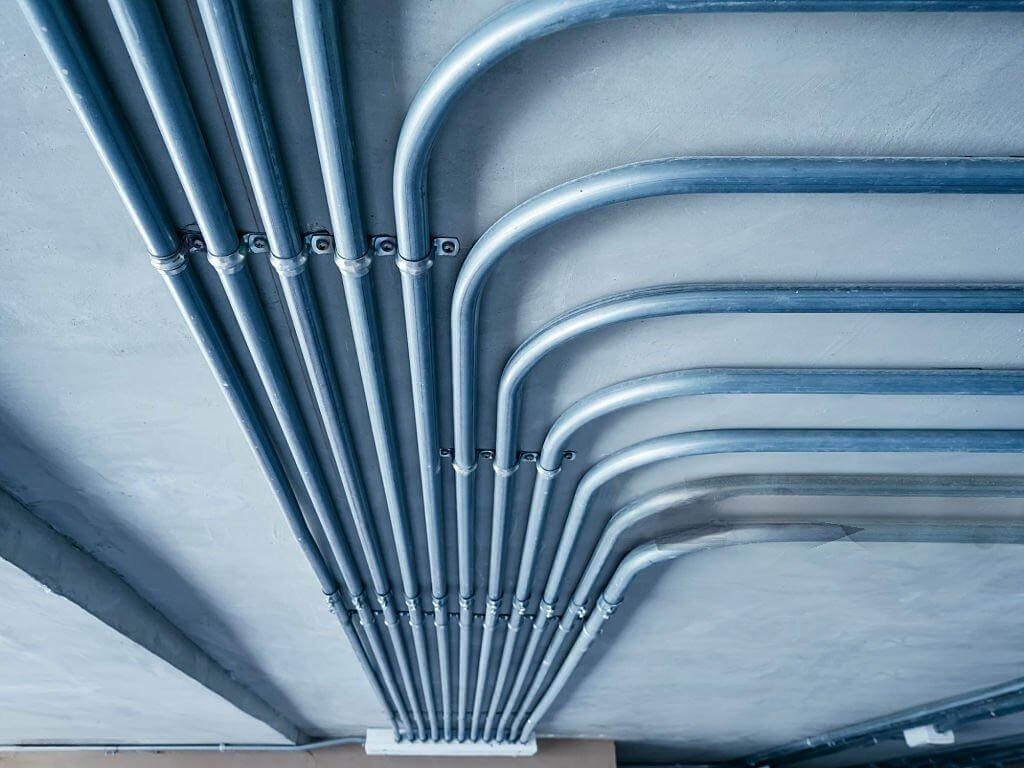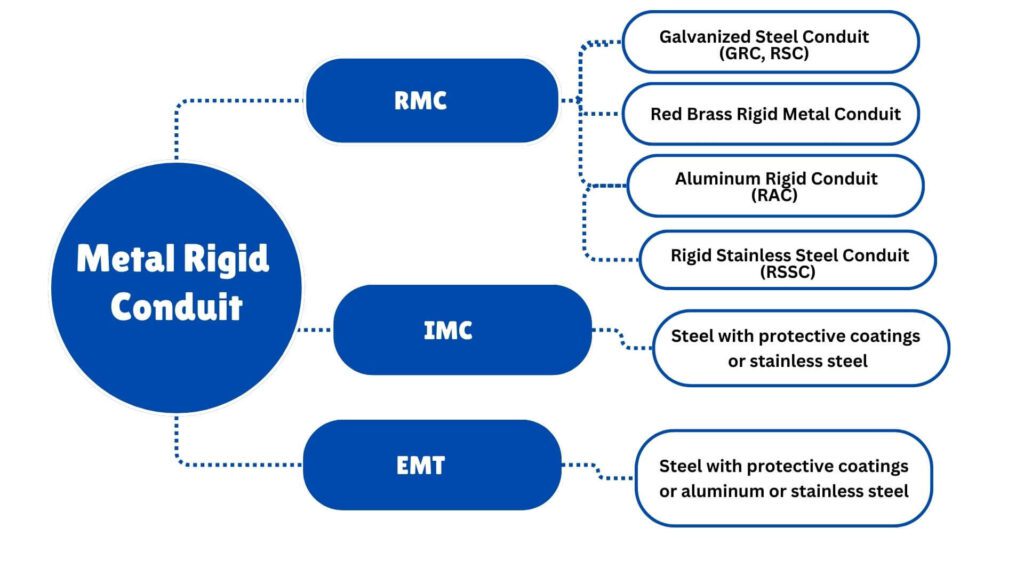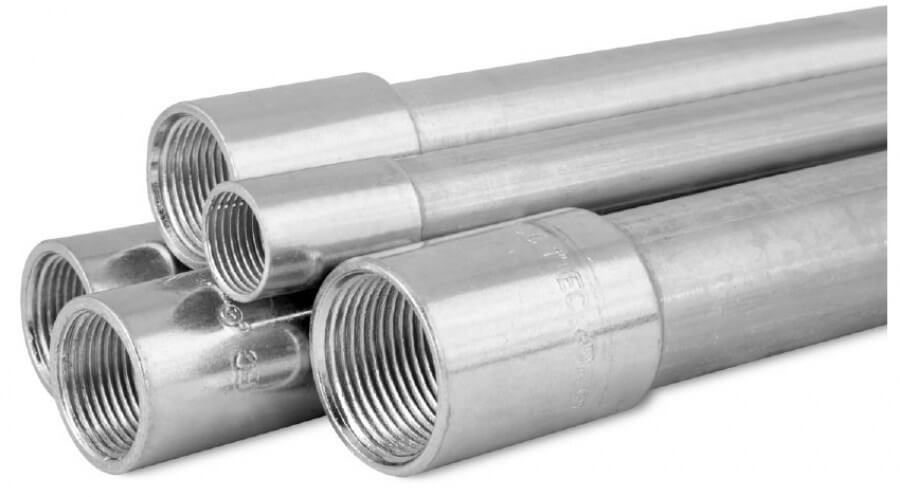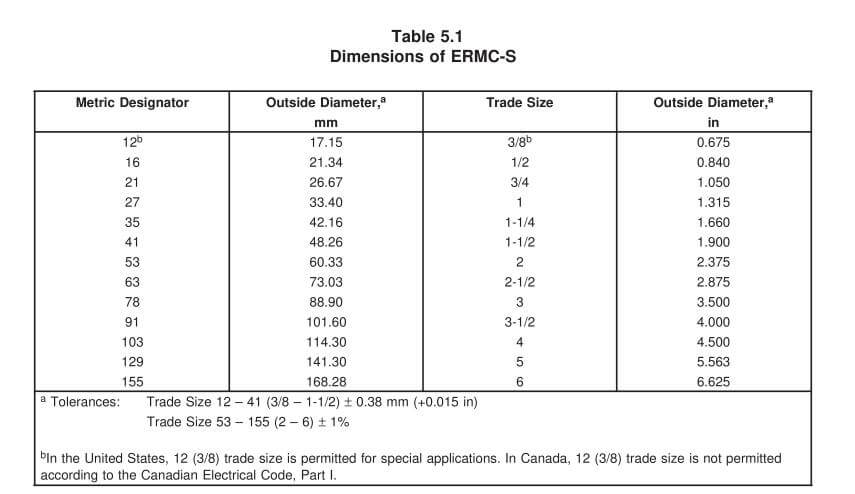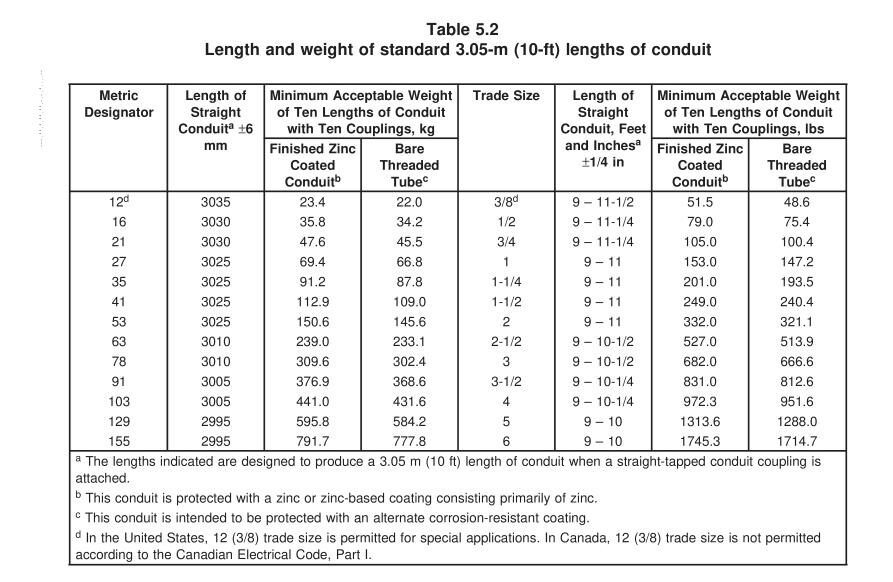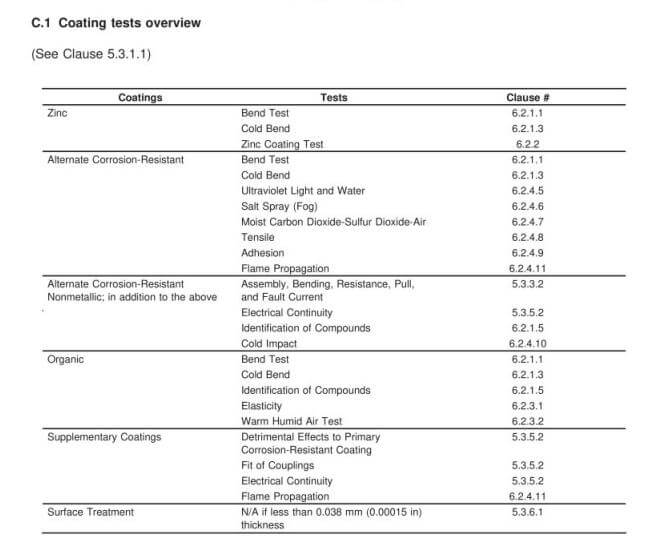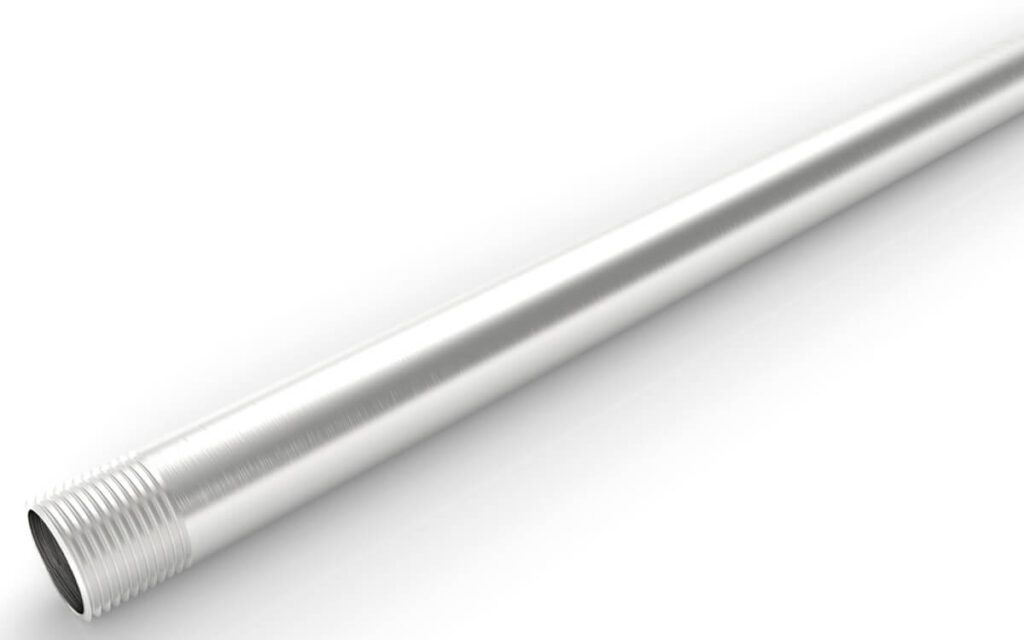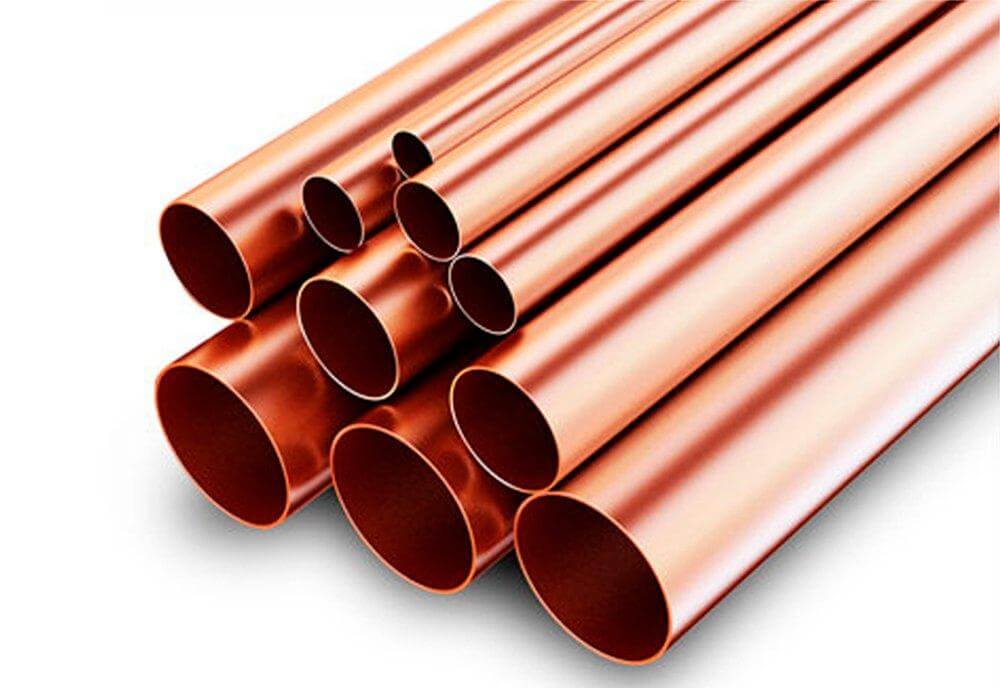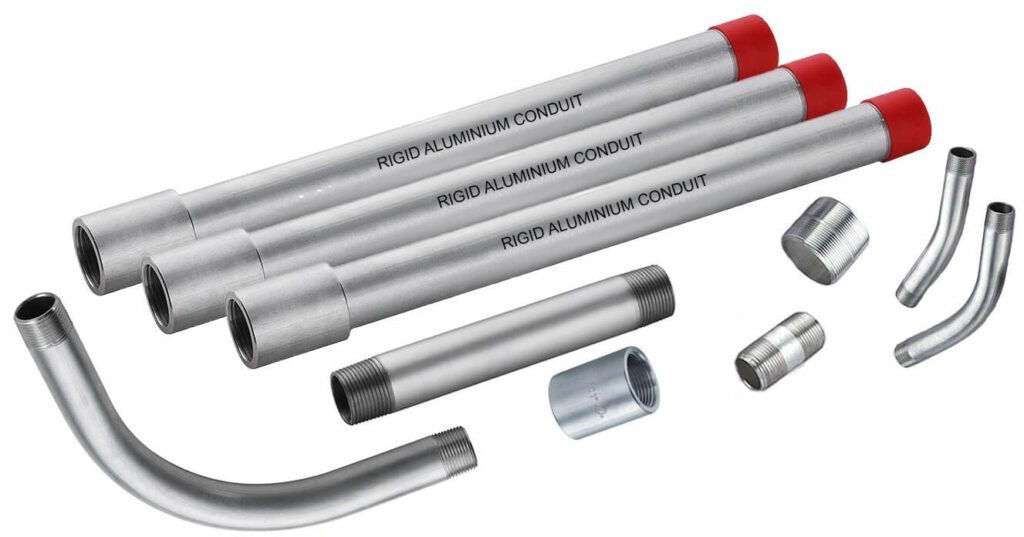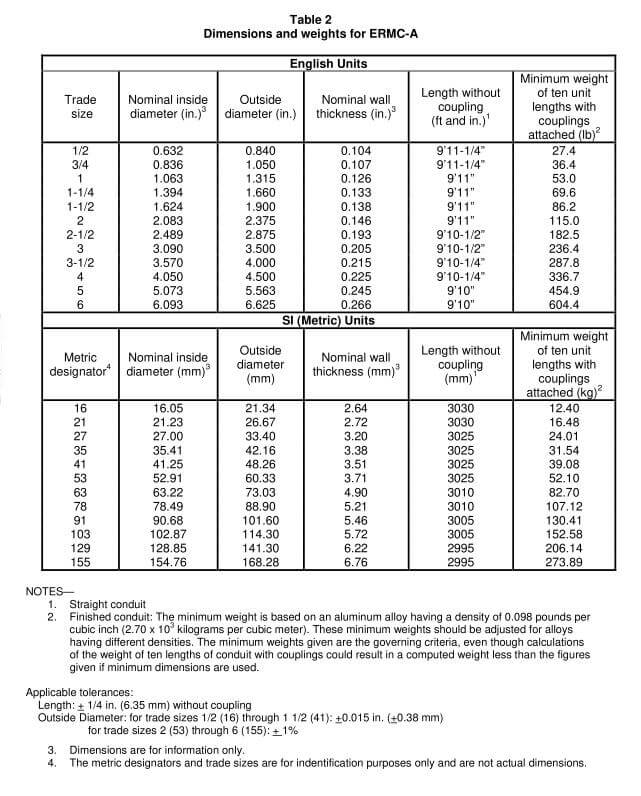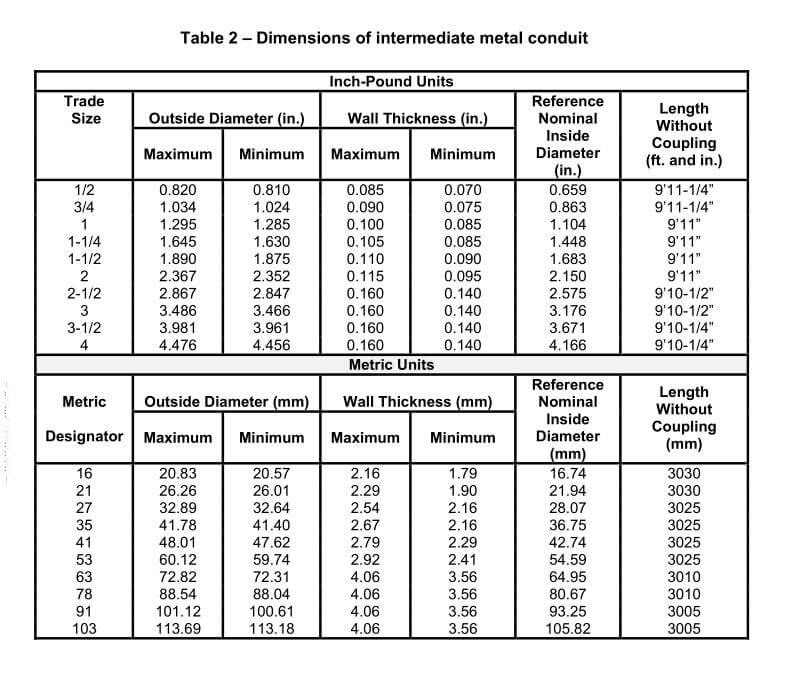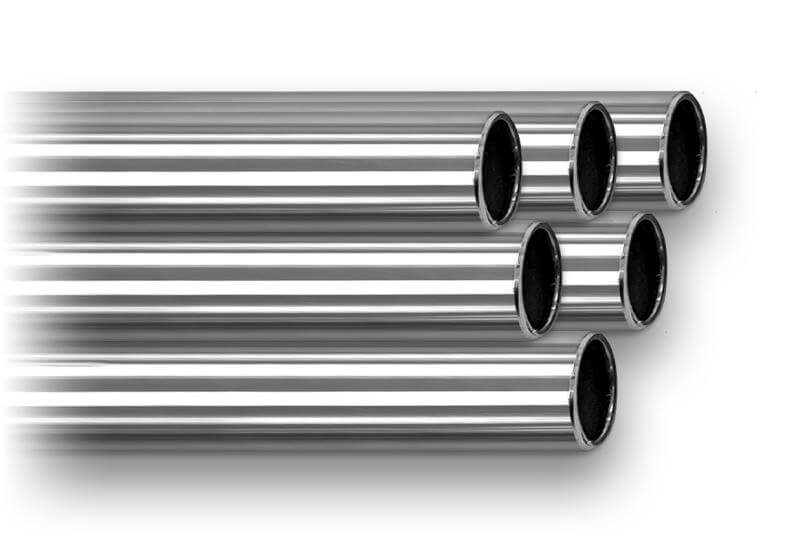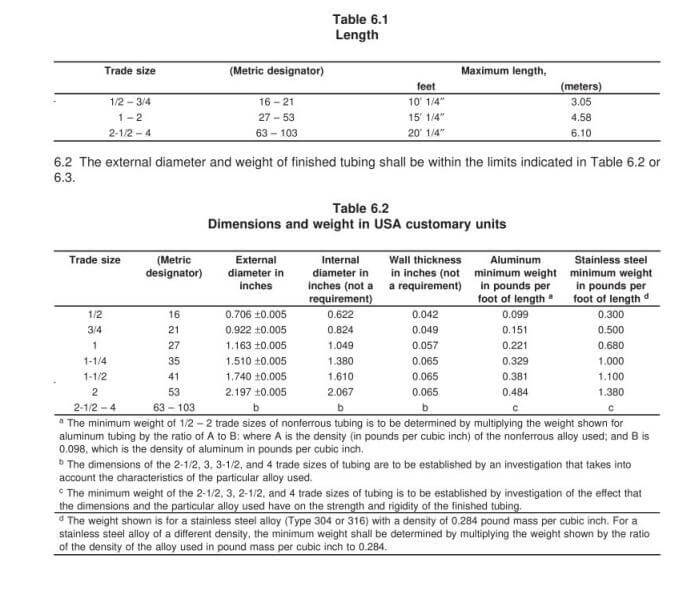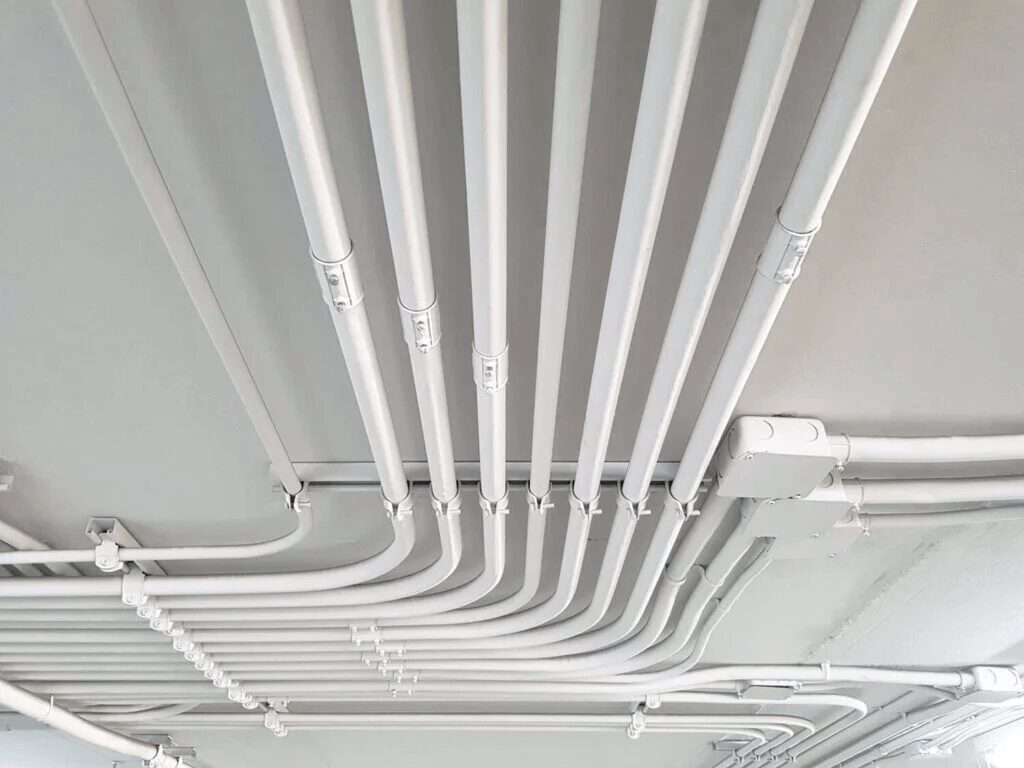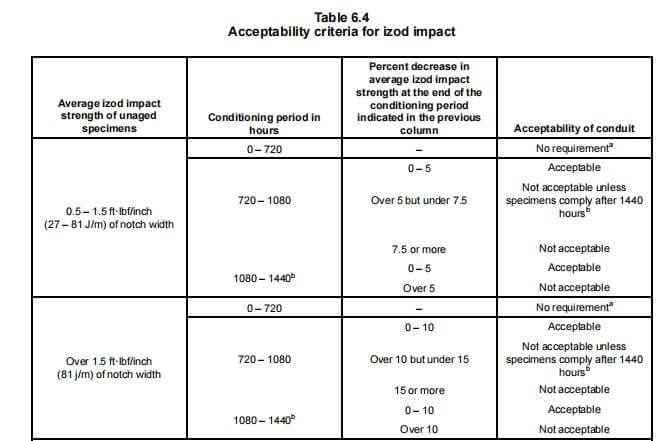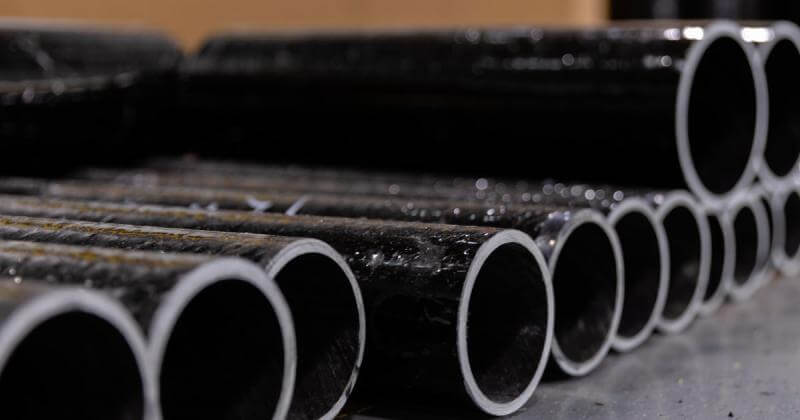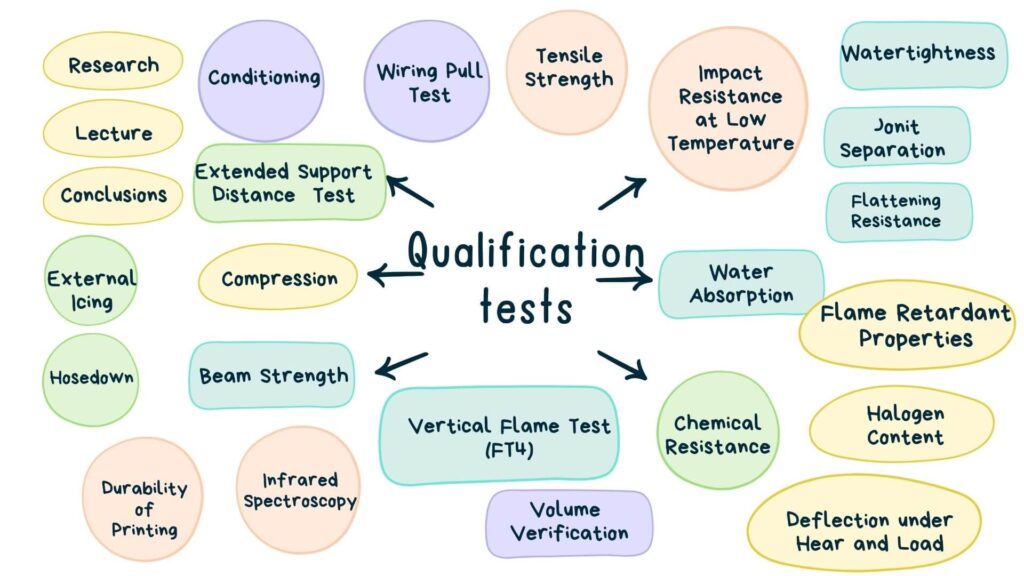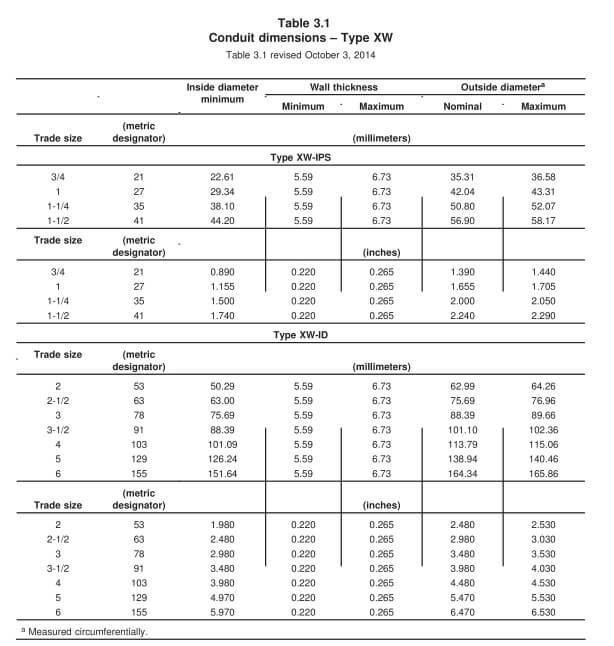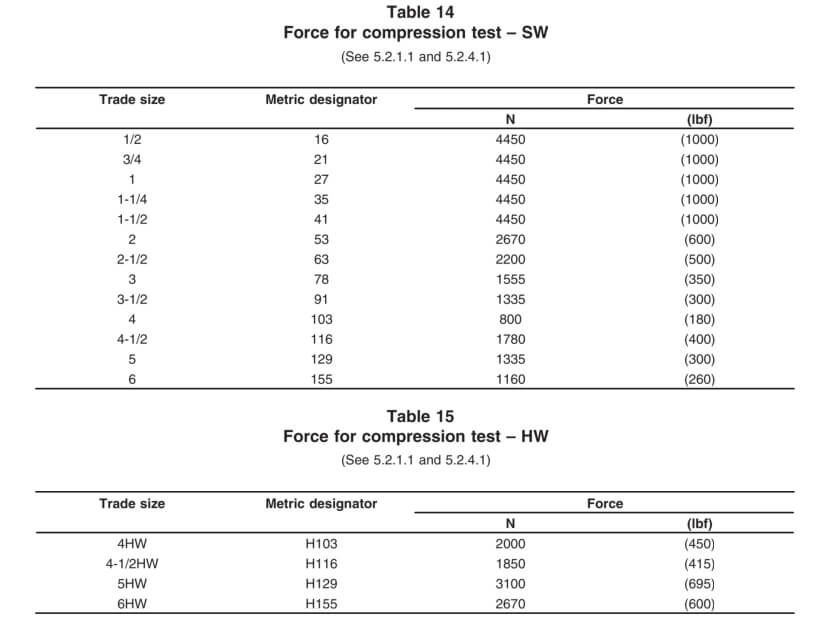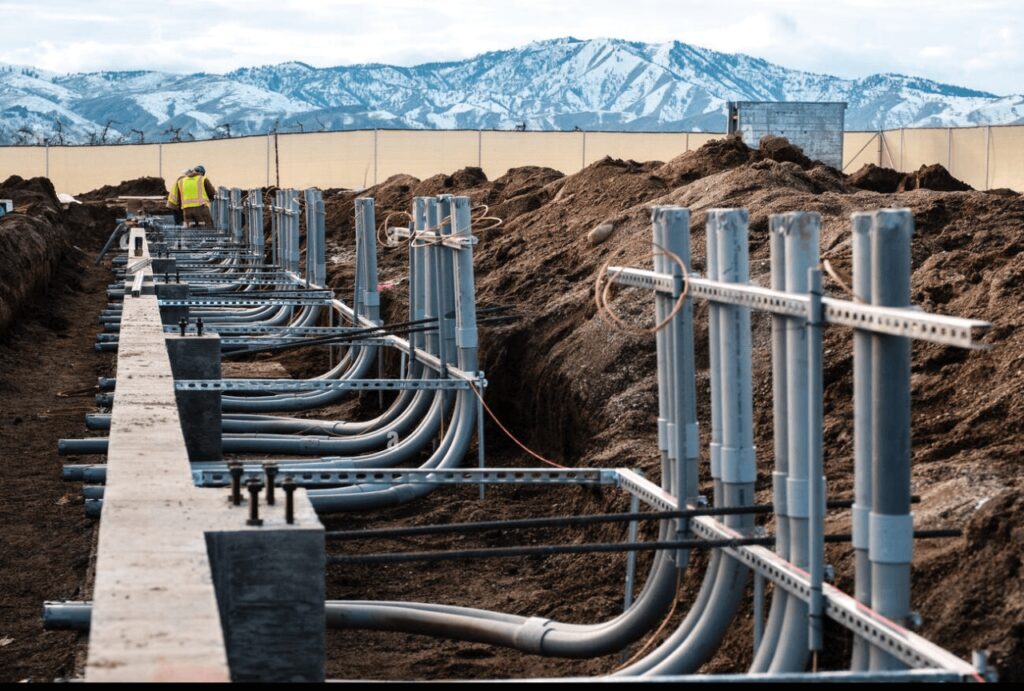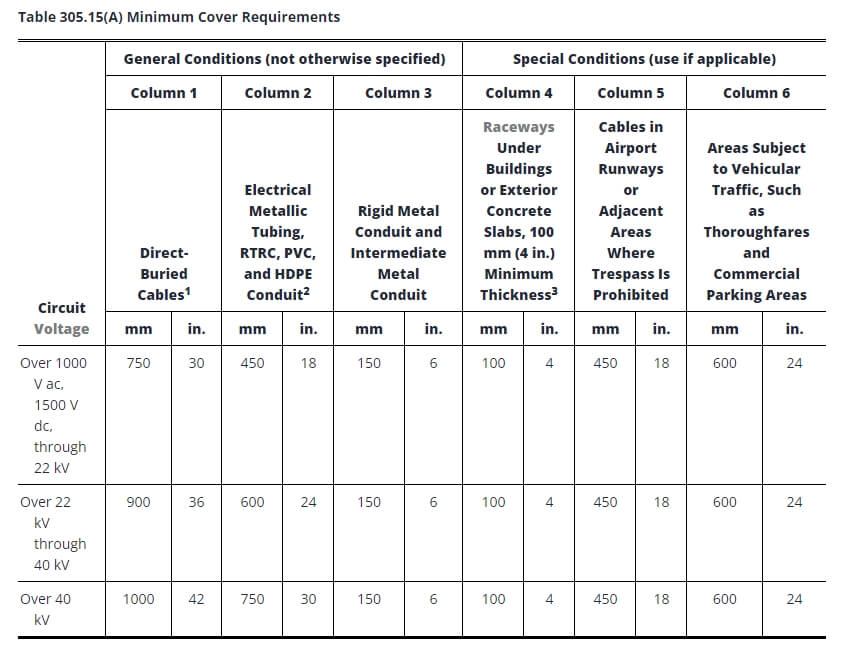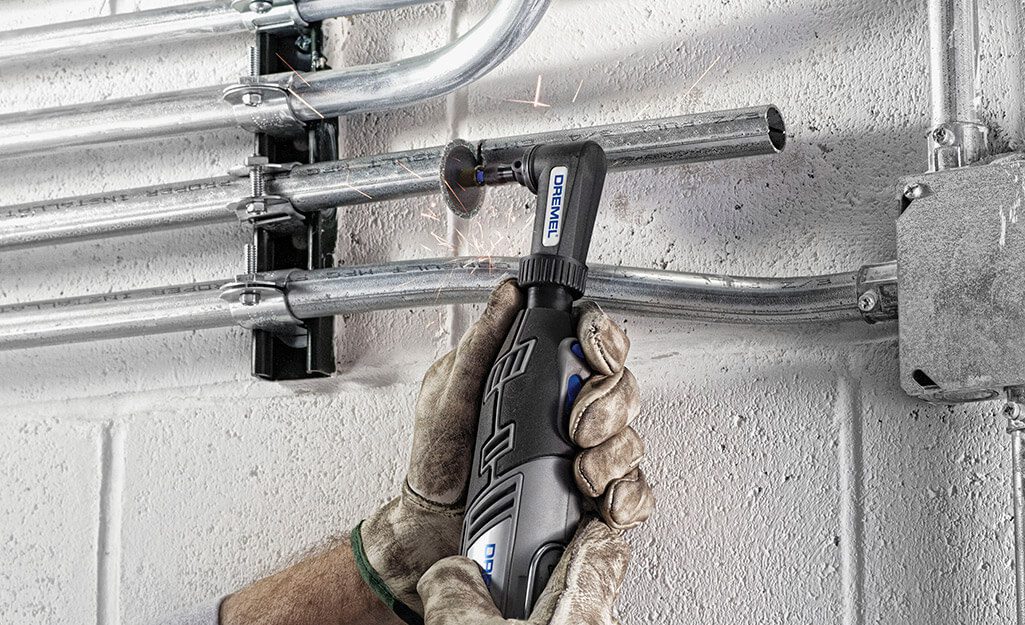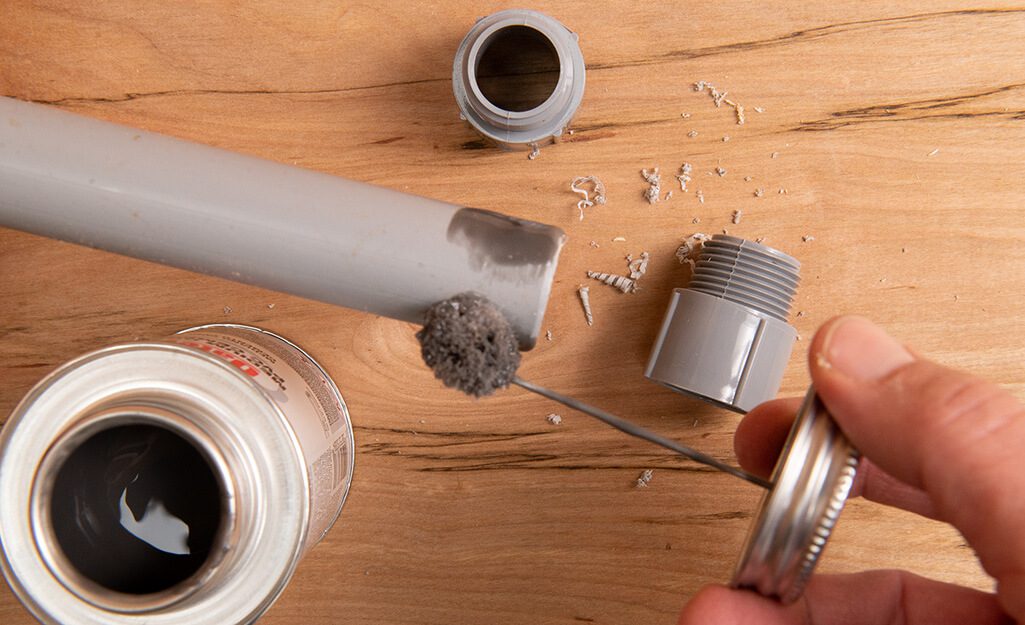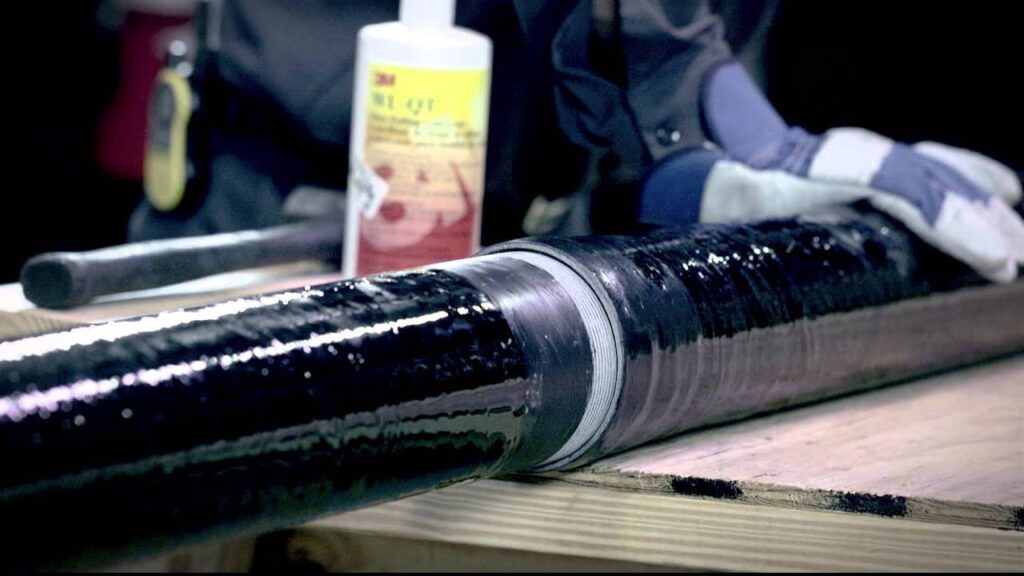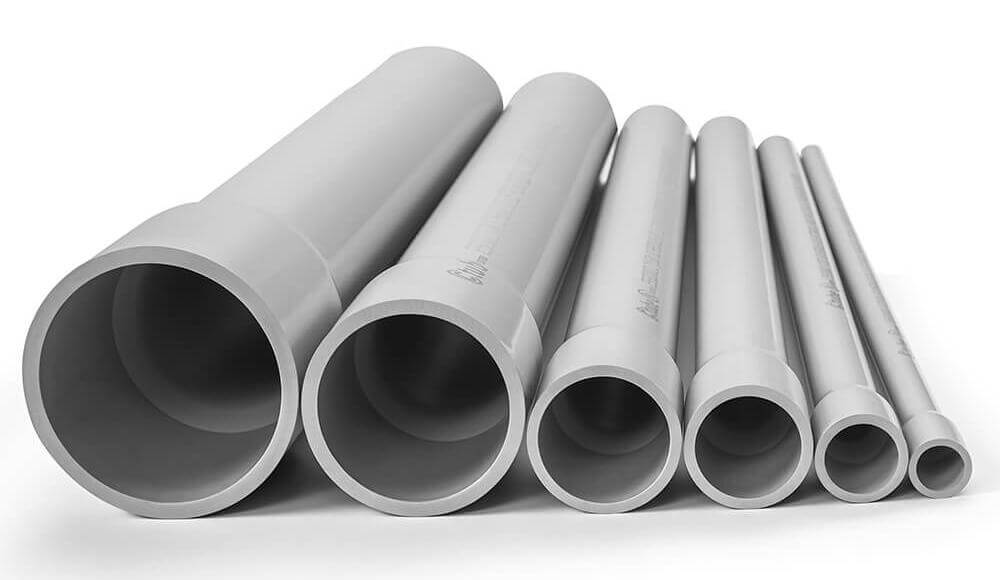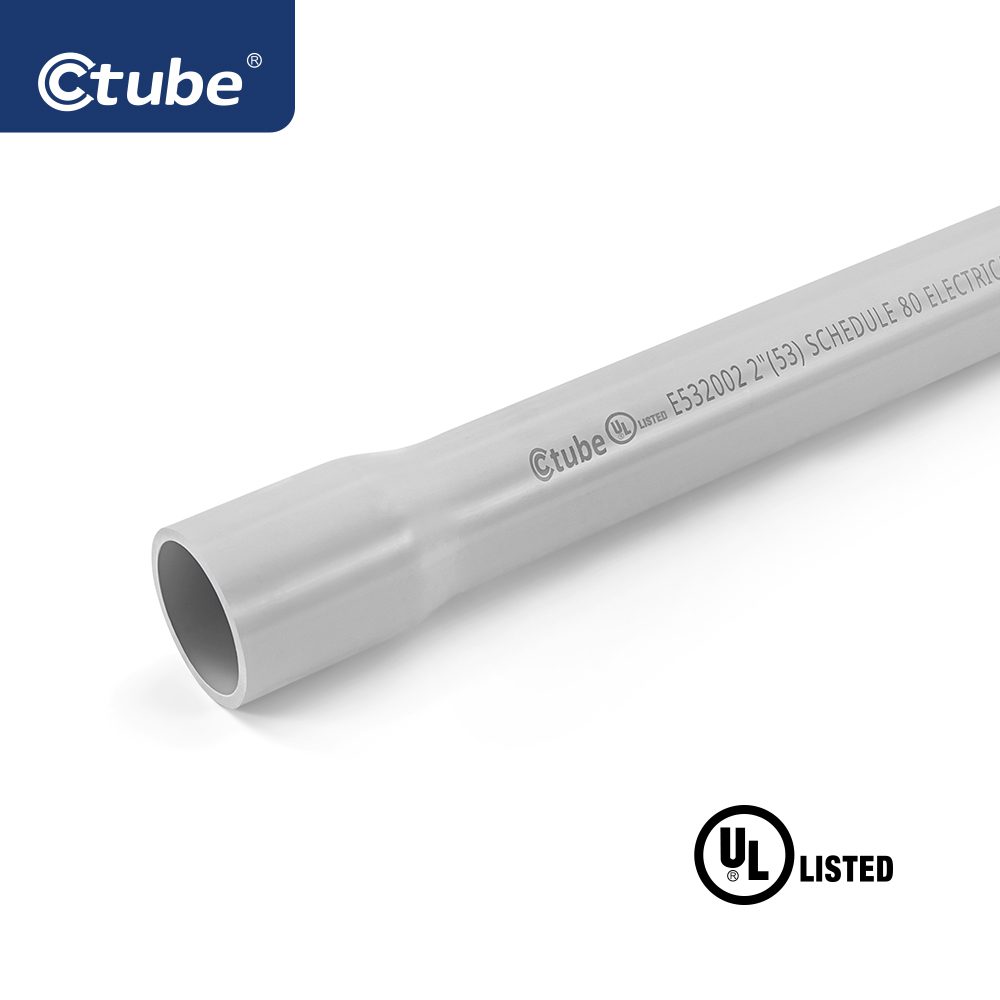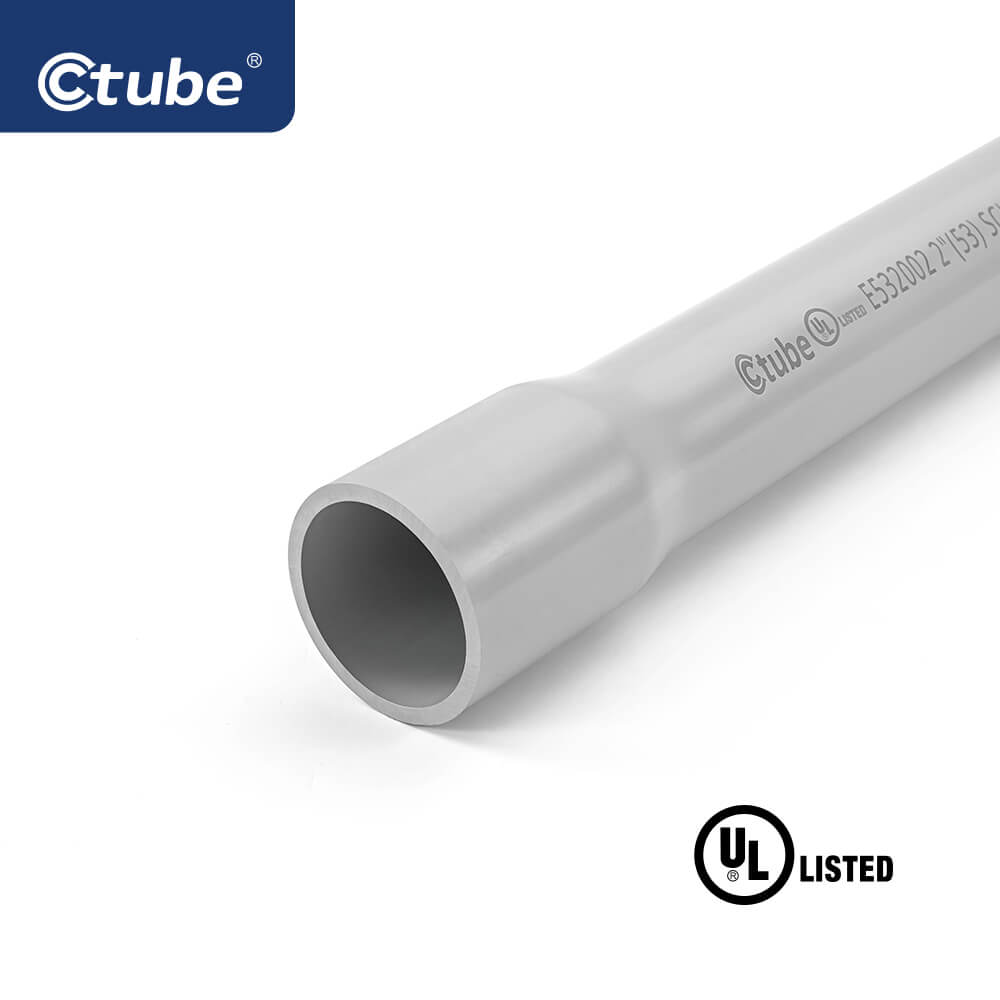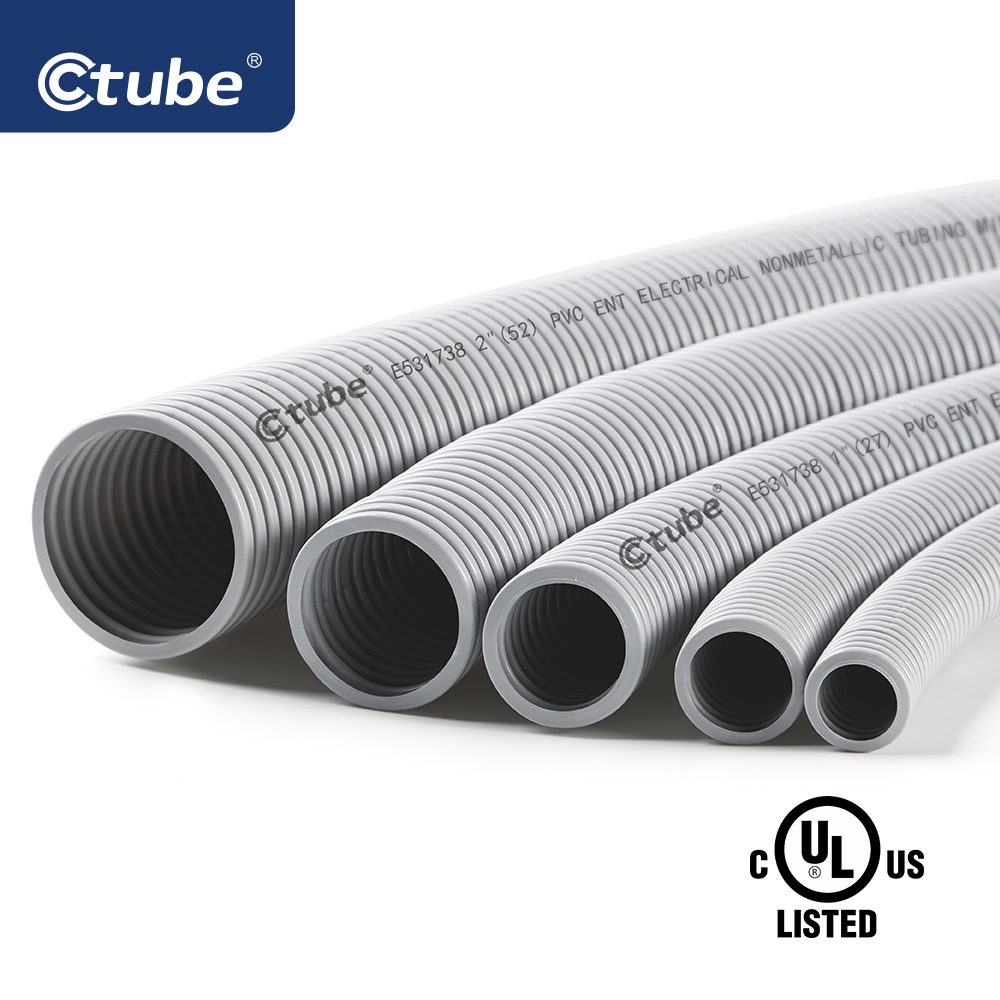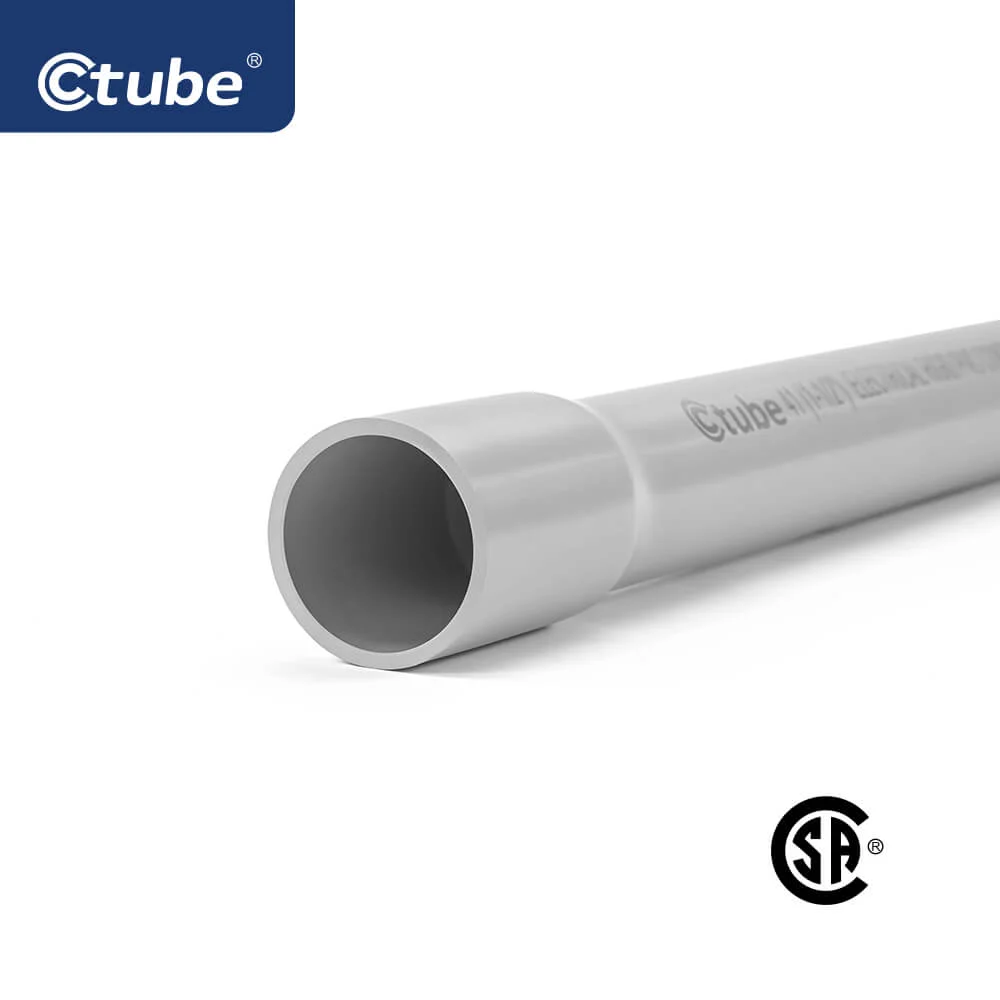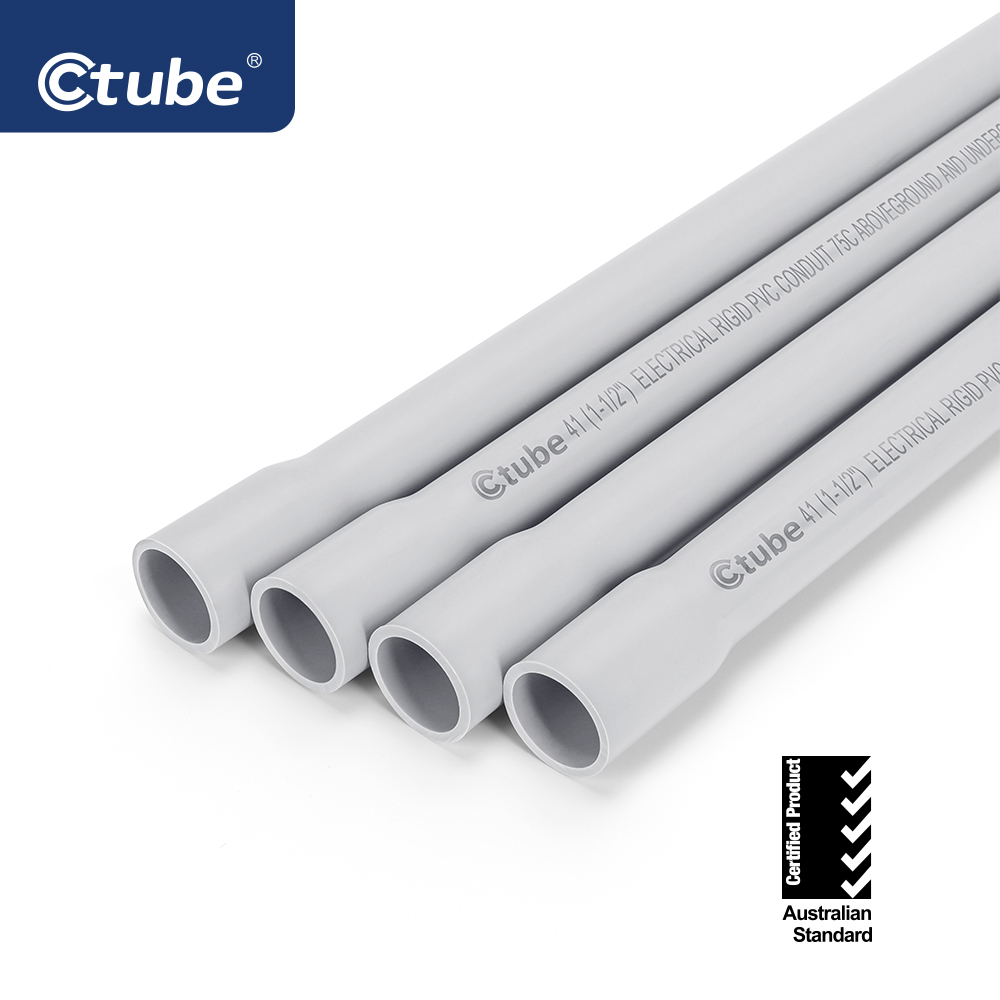Table of Contents
Toggle1. Introduction: Understanding Rigid Electrical Conduit
In the realm of electrical systems, conduits play a pivotal role in ensuring safety, longevity, and functionality. Electrical conduits serve as protective channels through which electrical wiring is run, shielding cables from physical damage, moisture, chemicals, and other environmental factors. Among the various types of conduits available, rigid electrical conduit stands out for its robustness and suitability in both industrial and residential applications.
1.1 What Is a Rigid Electrical Conduit?
A rigid electrical conduit is a tube-like structure used to encase and protect electrical wiring. As the name suggests, it is rigid, meaning that it is non-flexible and provides a solid, protective barrier for cables. It is typically used in environments where wiring needs maximum protection from external elements or where electrical installations must comply with stringent safety regulations.
Rigid electrical conduit is available in a variety of forms, each designed to serve specific needs depending on the material and application. The primary materials used for rigid electrical conduits include PVC (Polyvinyl Chloride), galvanized steel, aluminum, and RTRC (Reinforced Thermosetting Resin Conduit), among others. Each material brings unique advantages, making rigid conduit versatile across a range of environments and project requirements.
By the end of this article, you will have a thorough understanding of what rigid electrical conduit is, why it is an essential component in modern electrical systems, and how to incorporate it into your next project to maximize safety, efficiency, and compliance.
1.2 Different Types of Rigid Electrical Conduit
Rigid conduit can be roughly divided into metal, plastic, and glass fiber, depending on the material. Each type of conduit serves distinct needs depending on the installation environment and specific project requirements.
Metal Rigid Conduit includes types like Rigid Metal Conduit (RMC), Intermediate Metal Conduit (IMC) and Electrical Metallic Tubing, known for their strength and durability, making them suitable for industrial and outdoor use.
Plastic Rigid Conduit, such as Rigid Polyvinyl Chloride (PVC), is lightweight, corrosion-resistant, and commonly used in environments where moisture protection is essential, like underground installations.
Additionally, RTRC conduit, made from fiberglass, offers excellent electrical insulation, thermal resistance, and corrosion protection, making it an ideal choice for applications requiring non-conductive and high-strength materials.
In the following article, we will present the details of rigid conduit made from different materials.
2. Rigid Metal Conduit (RMC)
In accordance with NEC Article 344, Rigid Metal Conduit (RMC) is a threaded raceway with a circular cross-section, designed to protect and route conductors and cables. It can also function as an equipment grounding conductor when used with the proper couplings and fittings.
RMC is available in the following materials:
- Steel with protective coatings
- Aluminum
- Red brass
- Stainless steel
RMC comes in different types depending on the material used in its construction, each with a common name.
2.1 Electrical Rigid Metal Conduit – Steel (ERMC-S)
According to UL 6 Standard for Safety Electrical Rigid Metal Conduit – Steel. ERMC-S is a threadable steel raceway of circular cross-section designed for the physical protection and routing of wire conductors and use as an equipment grounding conductor when installed utilizing appropriate fittings.
RSC is provided with a zinc, zinc-based, nonmetallic, or other alternate corrosion-resistant exterior coating and an organic or zinc interior coating.
NEC Article 344 specifies that RMCs made of steel must have a protective coating to enhance their resistance to moisture, corrosion, and impact.
2.2 Specifications for Rigid Metal Conduit(RMC-S)
2.2.1 Material and Structure
Each tube used for Rigid Steel Conduit (RSC) shall be made of steel, ensuring that it is straight and features a circular cross-section. These specifications are crucial for ease in cutting and threading, as per the dimensions outlined in Table 5.1. The wall thickness must remain uniform throughout the entire length of the tube to maintain consistency in protection and support. Additionally, all seams in the tube shall be thoroughly welded to ensure structural integrity and durability.
2.2.2 Welded Seams
The welding process for RMC tubes must meet strict criteria to ensure safety and functionality. Welded seams should not have metal trimmings, sharp edges, or projections that could interfere with the internal wiring or the installation process. A slight bead along the interior of the seam is permissible, as long as it is smooth and does not exceed 0.38 mm (0.015 in) in height for trade sizes 12 to 53 (3/8 inch to 2 inches) or 0.51 mm (0.020 in) for trade sizes 63 to 155 (2 ½ inches to 6 inches).
2.2.3 Standard Length and Weight Requirements
The standard length of straight zinc-coated conduit or bare threaded tubes to be coated with an alternate corrosion-resistant material, including one coupling, must follow the specifications detailed Table 5.2. These tables outline the dimensions and weights for conduit that complies with the given standards.
2.2.4 Test requirements
Tubing Testing of Rigid Steel Conduit
- The tube testing process involves bending a sample of the smallest available trade size into a quarter circle around a mandrel, first at room temperature and then after conditioning it at 0°C (32°F) for 60 minutes. The tube must not crack or break its weld. If the tube has a nonmetallic coating and is rated for temperatures below 0°C, the test is performed at that lower temperature. For smaller tubes, a specific test apparatus is used, while larger tubes can be bent with any suitable equipment.
- Test the flexibility and durability of rigid steel conduit when bent under both normal and cold conditions. The goal is to ensure the tube can withstand bending without cracking or breaking, especially at weld points. The test also ensures the tube’s protective coatings remain intact at varying temperatures.
- The tests are crucial for ensuring the tube can perform safely and reliably in different environments, particularly where it’s exposed to bending forces during installation or use, and in colder climates where materials are prone to becoming brittle.
Coating Testing of Rigid Steel Conduit
- The table in the following outlines different tests for various types of coatings applied to tubes, including zinc, alternate corrosion-resistant, nonmetallic, organic, and supplementary coatings. These tests assess the coating’s performance under different conditions such as bending, exposure to UV light, salt spray, cold temperatures, and electrical continuity.
- The purpose of these tests is to ensure that the coatings provide adequate protection against environmental factors like corrosion, impact, and wear, maintaining the tube’s structural integrity and performance across different applications and environments.
While these specifications serve as a guideline for standard conduit production, additional guidelines are provided in Annex for further and detailed reference purposes. Please consult the relevant documents for comprehensive requirements and specifications.
2.3 Other Types of Rigid Metal Conduit
2.3.1 .Electrical Rigid Metal Conduit-Stainless Steel (ERMC-SS)
Electrical rigid metal conduit – stainless steel (ERMC-SS) — A threadable stainless steel raceway of circular cross-section designed for the physical protection and routing of wire conductors and use as an equipment grounding conductor when installed utilizing appropriate fittings.
2.3.2 Electrical Rigid Metal Conduit – Red Brass (ERMC-RB)
Electrical rigid metal conduit – red brass (ERMC-RB) — A threadable red brass raceway of circular cross-section designed for the physical protection and routing of wire conductors and use as an equipment grounding conductor when installed utilizing appropriate fittings.
2.3.3 Electrical Rigid Metal Conduit – Aluminum(ERMC-A)
Electrical Rigid Aluminum Conduit(ERAC): A threadable aluminum raceway of circular cross-section designed for the physical protection and routing of wire conductors and cables and for use as an equipment grounding conductor.
3. Electrical Intermediate Metal Conduit (EIMC)
Electrical Intermediate Metal Conduit (EIMC): A threadable steel raceway of circular cross-section designed for the physical protection and routing of conductors and cables and for use as an equipment grounding conductor.
According to ANSI C80.6-2005 American National Standard for Electrical Intermediate Metal Conduit (EIMC), the exterior surface of the conduit must be uniformly and thoroughly coated with metallic zinc or an alternate corrosion-resistant coating (ACRC).
The interior surface shall be coated with either zinc or an organic coating. This interior coating must maintain a smooth, continuous surface, with minor variations due to uneven coating flow considered acceptable.
Article 342 Intermediate Metal Conduit mentioned that IMC is available in the following materials:
- Steel with protective coatings
- Aluminum
3.1 Sizes of IMC
3.2 Testing of Intermediate Metal Conduit
The testing process for Intermediate Metal Conduit (IMC) involves several key assessments to ensure its safety and durability. First, the ductility of the steel is evaluated by bending the conduit at specific angles without causing cracks or damage to welds. For the coatings, smaller trade sizes (like 1/2 inch) are bent 180 degrees, while larger sizes are bent 90 degrees to check for any cracking or peeling. This ensures that the protective coatings remain intact during installation and use.
In addition to bending tests, the thickness of the zinc coating is measured using various methods, including magnetic testing and copper sulfate tests. These measurements are crucial for assessing corrosion resistance. Furthermore, the quality of organic coatings is tested by applying the coating to clean steel samples, baking them, and then bending them to ensure that the coating does not crack or flake.
The purpose of these tests is to verify that IMC meets industry safety standards and performs reliably in electrical applications. By confirming the conduit’s flexibility and the integrity of its coatings, these procedures help ensure long-term durability and effectiveness in protecting electrical wiring systems.
4.Electrical Metallic Tubing -EMT
Electrical Metallic Tubing (EMT). An unthreaded thinwall raceway of circular cross section designed for the physical protection and routing of conductors and cables and for use as an equipment grounding conductor when installed utilizing appropriate fittings.
4.1 Requirments of EMT
EMT shall be made of one of the following:
- Steel with protective coatings
- Aluminum
- Stainless steel
According to UL 797 Standard for Safety Electrical Metallic Tubing – Aluminum and Stainless Steel. Aluminum and stainless steel electrical metallic tubing do not typically require protective coatings. However, aluminum electrical metallic tubing used in concrete, direct burial applications, or severe corrosive environments must have a protective coating.
It is permissible to use one or more protective coatings. If these coatings have not been tested for corrosion resistance, they must be marked.
Non-metallic coatings must undergo evaluation for flame propagation, coupling fit, and electrical continuity with couplings.
4.2 Sizes of Electrical Metallic Tubing
5. RMC VS IMC VS EMT
According to the content mentioned above, we make a brief comparison between RMC, IMC and EMT.
Rigid Metal Conduit (RMC) is the most robust option among the three types of conduits. RMC offers exceptional durability and impact resistance, making it ideal for harsh environments. Its thickness provides substantial protection against physical damage, making it suitable for outdoor applications, underground installations, or areas where exposure to moisture and chemicals is prevalent. Additionally, RMC can serve as an effective grounding medium, enhancing its utility in industrial settings.
In contrast, Intermediate Metal Conduit (IMC) provides a balance between strength and weight. Constructed from thinner steel than RMC, IMC is easier to handle and install while still offering good protection against mechanical damage. It is commonly used in commercial and industrial applications where a moderate level of protection is necessary. IMC’s lighter weight and competitive cost make it a popular choice for many electrical installations, especially in environments that don’t require the heavy-duty performance of RMC.
Electrical Metallic Tubing (EMT) is the lightest and thinnest option, typically made from thin-walled galvanized steel or aluminum. EMT is designed for indoor use in dry locations, making it a cost-effective solution for residential and commercial applications. Its lightweight construction allows for easy installation and bending, which is advantageous for complex electrical routing. While EMT provides adequate protection in non-harsh environments, it may not withstand severe physical impacts or corrosive conditions as effectively as RMC or IMC.
Ultimately, the choice between RMC, IMC, and EMT depends on the specific requirements of the installation. For environments that demand maximum protection and durability, RMC is the best choice. IMC serves as a versatile alternative for moderate conditions, while EMT is ideal for lighter-duty applications where cost and ease of installation are priorities. Understanding the characteristics and applications of each conduit type will help in selecting the right option for your project.
6. Rigid Polyvinyl Chloride Conduit (PVC)
According to NEC Article 352 about Rigid Polyvinyl Chloride Conduit (PVC). A rigid nonmetallic raceway of circular cross section, with integral or associated couplings, connectors, and fittings for the installation of electrical conductors and cables.
PVC conduit shall be made of rigid (nonplasticized) polyvinyl chloride (PVC). PVC conduit and fittings shall be composed of suitable nonmetallic material that is resistant to moisture and chemical atmospheres.
For use aboveground, it shall also be flame retardant, resistant to impact and crushing, resistant to distortion from heat under conditions likely to be encountered in service, and resistant to low temperature and sunlight effects.
For use underground, the material shall be acceptably resistant to moisture and corrosive agents and shall be of sufficient strength to withstand abuse, such as by impact and crushing, in handling and during installation.
Where intended for direct burial, without encasement in concrete, the material shall also be capable of withstanding continued loading that is likely to be encountered after installation.
From the requirements mentioned above, Rigid Polyvinyl Chloride (PVC) Conduit can be categorized based on several criteria, including its type, the environment in which it is used (such as above ground or below ground), and the method of installation (like direct burial or encapsulation).
*For detailed test methods and content, please refer to the relevant standard UL 651 documentation.
In the following article, we will introduce the types of rigid conduit specified in UL 651 to help readers gain a better understanding of PVC rigid conduit.
6.1 Sizes of PVC Rigid SCH 40 & 80 Electrical Conduit
| Limits in inches on outside diameters and wall thicknesses of Schedule 40 and 80 conduit |
|||||
|---|---|---|---|---|---|
| Trade size of conduit |
Outside diameters | Minimum wall thicknesses | |||
| Average | Maximum | Minimum | Schedule 40 | Schedule 80 | |
| 1/2 | 0.840±0.004 | 0.848 | 0.832 | 0.109 | 0.147 |
| 3/4 | 1.050 ±0.004 | 1.060 | 1.040 | 0.113 | 0.154 |
| 1 | 1.315 ±0.005 | 1.325 | 1.305 | 0.133 | 0.179 |
| 1-1/4 | 1.660 ±0.005 | 1.672 | 1.648 | 0.140 | 0.191 |
| 1-1/2 | 1.900 ±0.006 | 1.912 | 1.888 | 0.145 | 0.200 |
| 2 | 2.375 ±0.006 | 2.387 | 2.363 | 0.154 | 0.218 |
| 2-1/2 | 2.875 ±0.007 | 2.890 | 2.860 | 0.203 | 0.276 |
| 3 | 3.500±0.008 | 3.515 | 3.485 | 0.216 | 0.300 |
| 3-1/2 | 4.000±0.008 | 4.050 | 3.950 | 0.226 | 0.318 |
| 4 | 4.500±0:009 | 4.550 | 4.450 | 0.237 | 0.337 |
| 5 | 5563 ±0.010 | 5.613 | 5.513 | 0.258 | 0.375 |
| 6 | 6.625±0.011 | 6.675 | 6.575 | 0.280 | 0.432 |
6.2 Tensile Strength of Rigid Conduit
- Aged vs. Unaged Testing: Three samples of PVC conduit are tested for tensile strength after aging, and their average strength must be at least 95% of the average tensile strength of three unaged samples.
- Test Method: The testing procedure follows the guidelines of ASTM D 638 (Standard Test Method for Tensile Properties of Plastics) for sample preparation, conditioning, and measuring tensile strength.
- Strength Requirements:
For Schedule 40 and 80 rigid PVC conduit, the minimum tensile strength of unaged samples must be 5,000 psi.
For Type A and EB rigid PVC conduit, the minimum tensile strength of unaged samples must be 4,000 psi.
This ensures that the PVC material maintains adequate strength even after aging and meets specific durability standards.
6.3 Impact Resistant for Schedule 40 and 80 and Type A Conduit
Ten 6-inch conduit samples are conditioned at room temperature and tested by dropping a heavy steel weight onto them. For Schedule 40, Type A, and EB conduit, a 20 lb weight is used, while for Schedule 80, a 75 lb weight is used. The goal is that no more than three out of the ten samples should have cracks or tears longer than 1/32 inch after the test.
This test ensures that the PVC conduit can withstand impacts without significant structural damage.
6.4 Flame Resistance Test for PVC Rigid Conduit
In the test, vertical samples of the conduit are exposed to a flame for three 60-second intervals, with 30 seconds between each flame application. To pass, the conduit must not continue to burn for more than 5 seconds after each flame exposure, and it must not ignite any nearby combustible materials during or after the test.
This test ensures the conduit’s fire safety in real-world applications.
The fire rating described in this test aligns with the V-0 rating under the UL 94 standard, which is commonly used to assess the flammability of plastic materials, including PVC.
In a V-0 test, the material must stop burning within 10 seconds after being exposed to a flame and must not produce flaming drips that could ignite other materials. Since the passage specifies that the conduit should not flame for longer than 5 seconds after each flame application and must not ignite nearby materials, it indicates a similar high level of fire resistance as the V-0 rating.
6.5 Resistance to Crushing for PVC Rigid Conduit
In the test, three 6-inch samples are cut and conditioned to room temperature, with their inside diameters measured. The samples are placed between two flat steel plates, which are pressed together at a controlled rate to apply a specified load. The conduit must not show signs of pulling away or buckling, and the minor axis of any flattened sample must remain at least 70% of its original inside diameter after loading.
This test ensures the conduit’s durability under crushing forces.
6.6 Crush Resistance vs Impact Resistance for PVC Rigid Conduit
Crush resistance and impact resistance are both measures of a material’s durability, but they test different types of stress:
- Crush Resistance: This refers to a material’s ability to withstand a steady, compressive force without being deformed or failing. It measures how well the material can resist being squashed or flattened when a continuous load is applied. For PVC conduit, crush resistance is important in situations where the conduit is buried underground or subjected to heavy, constant pressure (e.g., from soil or traffic).
- Impact Resistance: This measures a material’s ability to withstand sudden, forceful impacts without cracking, breaking, or tearing. It tests how well the material can absorb shock or impact from a dynamic force, such as being struck by a falling object or dropped. For PVC conduit, impact resistance is crucial in handling, installation, or accidental impacts that may occur in use.
In short, crush resistance deals with enduring slow, constant pressure, while impact resistance deals with absorbing sudden shocks or blows.
6.7 Sunlight Resistance for SCH 80 & 40 PVC Conduit
Sunlight resistance test for Schedule 40 and Schedule 80 rigid PVC conduit, specifically measuring the Izod impact strength. Notched specimens cut from unaged conduit must have an average Izod impact strength of at least 0.5 ft-lbf/inch (27 j/m) of notch width. Additionally, specimens conditioned for 720, 1080, and potentially 1440 hours must meet specific impact strength requirements outlined in a referenced table. The preparation and testing of these samples follow procedures similar to ASTM D 256, which assesses the impact resistance of plastics.
This test ensures the conduit can maintain its strength when exposed to sunlight over time.
*Schedule 40 rigid PVC conduit intended for underground use only is not required to be subjected to performance tests for Flame, or Sunlight Resistance.
7. Reinforced Thermosetting Resin Conduit (Rigid RTRC Conduit Conduit)
According to NEC Article 355, Reinforced Thermosetting Resin Conduit (RTRC) is defined as a rigid, nonmetallic raceway with a circular cross-section.
Reinforced thermosetting resin conduit (RTRC), also known as fiberglass conduit, or fiberglass reinforced epoxy conduit.
Reinforced thermosetting resin conduit and associated fittings are covered separately in the Standard for Aboveground Reinforced Thermosetting Resin Conduit (RTRC) and Fittings, UL 2515 and the Standard for Belowground Reinforced Thermosetting Resin Conduit (RTRC) and Fittings, UL 2420.
7.1 Requirments of Fiberglass Conduit
RTRC and its fittings must be made from suitable nonmetallic materials that are resistant to moisture and chemical atmospheres.
For aboveground applications, these materials must also be flame retardant, impact-resistant, crush-resistant, and able to withstand heat distortion under expected service conditions, as well as resistant to low temperatures and the effects of sunlight.
For underground use, the materials must provide adequate resistance to moisture and corrosive agents, possessing sufficient strength to endure impacts and crushing during handling and installation.
Additionally, materials intended for direct burial without concrete encasement must be capable of withstanding continuous loading that may occur post-installation.
According to UL 2515 Standard, the products specified in this Standard are intended for use at -40°C (-40°F) to 110 ‘C (230°F), please check with your supplier for specific conduit temperatures.
In this post, we provide an overview of some of the tests and requirements; for comprehensive details, please refer to the relevant standards.
7.2 Different Types and Classify of Rigid Fiberglass Conduit
- ID (dimensions based on inside diameters)
- lPS (dimensions based onoutside diameters of iron pipe sizes)
- Wall thickness
SW: Standard Wall
MW= Medium Wall
HW = Heavy Wall
XW = Extra Heavy Wall
- Above ground UL 2515
- Under ground UL 2420
7.3 Sizes of Rigid RTRC Conduit
There are various types of RTRCs, and this part uses UL 2515A standard as an example, which specifically covers aboveground (AG) extra heavy wall conduit, Type XW.
7.4 Tensile Strength & Compression of Rigid RTRC Conduit
The minimum longitudinal tensile strerigth of the conduit shall not be less than 7.000psi (48.26 MPa) when tested in accordance with ASTM D638 or NMX-J-003-SCFl, with no tolerance on relativehumidity.
The interal diameter of conduit shall not decrease by more than 25% during application of theforce specified in Tables 14 and 15 when tested. The conduit shall showno evidence of cracking or buckling after removal from the compression machine.
7.5 Flame Retardant Properties of Rigid RTRC Conduit
For each specimen tested, observations must be recorded to determine whether flaming occurs for more than 30 seconds after the first, second, third, or fourth flame application, and whether flaming lasts for more than 60 seconds after the fifth flame application.
“FT4” is optional flame test. The FT4 flame test is a National Building Code of Canada reguirement in designated noncombustible construction buildings.
The FT4 certification is one of the most popular as it has one of the toughest tests to pass, given the 70,000 BTU/hour flame. This certifications testing procedure has cables mounted on a vertical tray, which are exposed for 20 minutes to a 70,000 BTU/hour flame.
The pass or fail criteria for the FT4 certification is the finished wires or cables shall not exhibit charred material beyond a length exceeding 1.5 m (5 ft.) from the lower edge of the burner face when subjected to the test (CSA C22.2 No.38).
8. Exploring Burial Depth Requirements for Rigid Electrical Conduits
In the realm of electrical installations, the proper burial depth of conduits is paramount for ensuring safety, compliance, and durability. Rigid electrical conduits, including rigid metal conduit (RMC), nonmetallic conduits like PVC, and fiberglass conduits, have specific burial depth requirements dictated by both the National Electrical Code (NEC) and local building codes.
8.1 NEC Standards for Conduit Burial Depth
Underground conductors shall be identified for the voltage and conditions under which they are installed. Conductors used for direct-burial applications shall be of a type identified for such use. Underground cables shall be installed following the depth requirements of Table 305.15(A).
Notes:
1.Cover shall be defined as the shortest distance in millimeters (inches) measured between a point on the top surface of any direct-buried conductor, cable, conduit, or other raceway and the top surface of finished grade, concrete, or similar cover.
2.Lesser depths shall be permitted where cables and conductors rise for terminations or splices or where access is otherwise required.
3.Where solid rock prevents compliance with the cover depths specified in this table, the wiring shall be installed in a metal or nonmetallic raceway permitted for direct burial. The raceways shall be covered by a minimum of 50 mm (2 in.) of concrete extending down to rock.
4.In industrial establishments, where conditions of maintenance and supervision ensure that qualified persons will service the installation, the minimum cover requirements for other than rigid metal conduit and intermediate metal conduit shall be permitted to be reduced 150 mm (6 in.) for each 50 mm (2 in.) of concrete or equivalent placed entirely within the trench over the underground installation.
5.Direct Buried Cables: Underground direct-buried cables that are not encased or protected by concrete and are buried 750 mm (30 in.) or more below grade shall have their location identified by a warning ribbon that is placed in the trench at least 300 mm (12 in.) above the cables.
6.ElectricalMetallicTubing, RTRC, PVC and HDPE Conduit: Listed by a qualified testing agency as suitable for direct burial without encasement. All other nonmetallic systems shall require 50 mm (2 in.) of concrete or equivalent above conduit in addition to the table depth.
7.Raceways UnderBuildings or Exterior Concrete Slabs,100mm (4 in.)MinimumThickness:
The slab shall extend a minimum of 150 mm (6 in.) beyond the underground installation, and a warning ribbon or other effective means suitable for the conditions shall be placed above the underground installation.
8.Other nonshielded cables not covered in 305.15(A)(1) or (A)(2) shall be installed in rigid metal conduit, intermediate metal conduit, or rigid nonmetallic conduit encased in not less than 75 mm (3 in.) of concrete.
9.Conductors emerging from the ground shall be enclosed in listed raceways. Raceways installed on poles shall be of rigid metal conduit, intermediate metal conduit, RTRC-XW, Schedule 80 PVC conduit, or equivalent, extending from the minimum cover depth specified in Table 305.15(A) to a point 2.5 m (8 ft) above finished grade.
8.2 Environmental and Load Considerations
Environmental factors significantly influence conduit burial depth. Soil conditions, such as stability and moisture content, can dictate how deeply a conduit should be installed to ensure it remains secure over time. For instance, in rocky or unstable soils, deeper burial may be necessary to prevent damage from soil movement.
Traffic loads also play a critical role, particularly in areas where conduits are installed beneath roads or parking lots. Here, deeper burial is often required to protect the conduits from the weight and vibration of vehicles and heavy equipment.
8.3 Importance of Local Codes
While the NEC provides a general framework for conduit burial depths, local building codes can introduce additional requirements based on local conditions. These regulations are tailored to address specific regional factors, such as local climate and soil characteristics, which may not be fully covered by NEC guidelines. As such, it is vital for contractors and electricians to check local regulations to ensure that their installations meet all necessary standards.
9. Installation Guidelines for Rigid Electrical Conduit
9.1 How to Install Rigid Metal Conduit: A Step-by-Step Guide
Metal conduit systems, such as steel rigid metal conduit (RMC), intermediate metal conduit (IMC), and electrical metallic tubing (EMT), provide essential protection to electrical wiring. These systems safeguard wires from damage, ensure proper grounding, and help maintain compliance with the National Electrical Code (NEC). In certain environments, using pre-threaded and corrosion-coated conduit simplifies installation while enhancing durability.
9.1.1 Preparation: Tools and Planning
Before starting the installation, gather the following tools and materials:
- Cutting tools: Such as a hacksaw or roll cutter (if cutting is required).
- Reamer: To remove burrs inside the conduit after cutting.
- Conduit bender: For making precise bends.
- Wrenches: Sized appropriately for the conduit.
- Thread-sealing compound or corrosion-resistant paint: To protect threads (if necessary).
- Additionally, confirm that you have all necessary fittings, couplings, and connectors on hand to connect the conduits and ensure grounding.
9.2.2 Cutting and Threading (If Needed)
- Measure and Cut the Conduit: Measure the length of conduit required and cut it with a saw, ensuring the cut is clean and straight.
- Ream the Conduit: After cutting, ream the inner edges of the conduit to remove burrs that could damage wires.
- Threading: If the conduit needs to be threaded, use a standard ¾-inch per foot (NPT) die for threading. Ensure that the threads are smooth and clean to facilitate proper connections. Factory-applied threads should not require additional cutting unless modified.
For pre-threaded conduit, this step can be skipped, but field protection of any exposed or damaged threads is necessary.
9.1.3 Connecting and Tightening the Conduit
Connecting metal conduits involves precise fitting and tightening to ensure a secure and continuous electrical system.
- Hand-Tighten and Wrench Finish: Start by hand-tightening the conduit into the fitting, then use a wrench for final tightening. The general rule is to wrench-tighten until the conduit is secure, typically one full turn beyond hand-tight.
- Avoid Over-Tightening: Excessive force can damage the threads and the protective coating. Always aim for a snug fit without using extensions on wrenches, which could cause undue stress.
For threadless fittings, ensure that the conduit is pushed completely into the fitting, and secure the connection using the appropriate torque settings.
9.1.4 Bending the Conduit
If bends are necessary to route the conduit around obstacles, follow these bending guidelines:
- Hand Bending: Smaller conduit sizes (½ to 1 inch) can be bent with a hand bender. For larger sizes, use a mechanical or power bender.
- Precision: Mark the conduit where the bend is needed, and ensure that bends do not exceed 90 degrees between pulling points to facilitate easier wire pulling.
- Avoid Kinks: Incorrect bending can flatten or kink the conduit, reducing the interior space and increasing the difficulty of pulling wires.
For pre-threaded conduit, take extra care not to damage the threads during bending.
9.1.5 Supporting and Securing the Conduit
Proper support is crucial to maintaining a safe and effective conduit system. The NEC specifies intervals at which conduits must be supported.
- Use Straps, Hangers, or Clamps: Secure conduits to walls, ceilings, or structural members using the appropriate type of fastener, such as straps, hangers, or clamps. For vertical installations, be sure the conduit is secured at its top end to prevent sagging.
- Support in Concrete or Soil: If the conduit transitions from concrete to soil or is installed underground, apply supplementary protection to the section exposed to soil. Use approved coatings, wraps, or PVC-coated conduit to extend the life of the system.
9.1.6 Corrosion Protection in Severe Environments
In corrosive environments, such as coastal or industrial areas, the conduit’s protective coating is critical to preventing degradation over time.
- Inspect the Coating: Ensure that the factory-applied protective coating remains intact throughout the installation process. If damage occurs, apply a corrosion-resistant compound, zinc-rich paint, or wrap the area in corrosion-resistant tape.
- Protect Field-Cut Threads: If threads are cut in the field, apply a corrosion-resistant, electrically conductive coating to the exposed metal to maintain protection and prevent rust.
9.1.7 Final Testing and Verification
Once the conduit system is installed, it’s important to verify that all connections are secure and that the system is functioning as intended.
- Continuity Test: Perform a continuity test to ensure that all metal conduits are electrically continuous from the service panel to the last outlet. This test confirms that the conduit system will provide adequate grounding in the event of a fault.
- Inspect the Installation: Check that all conduits are properly secured, that there is no sagging, and that all fittings are tight. Ensure that the protective coating remains intact and that any additional protective measures (such as wraps or coatings) have been applied where necessary.
9.2 How to Install PVC Rigid Conduit:: A Step-by-Step Guide
PVC (polyvinyl chloride) rigid conduit is a versatile, lightweight, and non-metallic solution for protecting electrical wiring in various environments. It’s commonly used in outdoor, wet, or underground installations due to its resistance to moisture and corrosion. Installing PVC conduit requires specific techniques that differ from installing metal conduit, particularly in how it is cut, joined, and supported.
9.2.1 Tools and Materials Needed for Installation
Before you begin, gather the necessary tools and materials for a successful PVC conduit installation:
-
- PVC Conduit: The appropriate diameter and length for your project.
- PVC Fittings: Couplings, elbows, junction boxes, and other components.
- PVC Cement and Primer: To secure joints and fittings.
- Conduit Cutter or Hacksaw: To cut the conduit to the required length.
- Deburring Tool: To smooth the cut edges of the conduit.
- Tape Measure: For accurate measurements.
- Level: To ensure proper alignment.
- Pull String or Fish Tape: To pull wires through the conduit after installation.
9.2.2 Planning the Layout and Measuring the Run
Before starting the installation, carefully plan the route for your PVC conduit. This includes measuring the distance between points where the conduit will run and mapping out where bends, fittings, and junctions will be needed.
- Measure and Mark: Use a tape measure to determine the length of PVC conduit required for each section and mark where cuts will be made.
- Account for Expansion and Contraction: PVC conduit expands and contracts with temperature changes, so you’ll need to leave some room for movement or install expansion fittings in long runs.
9.2.3 Cutting and Deburring the PVC Conduit
Cutting PVC conduit is much easier than cutting metal conduit, but it’s still important to make clean, precise cuts to ensure a smooth installation.
- Cut the Conduit: Use a PVC conduit cutter or a fine-toothed hacksaw to cut the conduit to the measured lengths. Make sure the cuts are straight and clean.
- Deburr the Edges: After cutting, use a deburring tool or a utility knife to remove any rough edges or burrs from inside and outside the conduit. This step is crucial to prevent damaging the wires when they’re pulled through the conduit.
9.2.4 Joining PVC Conduit with Solvent-Welding
Unlike metal conduit, where threads or set-screw fittings are used, PVC conduit sections are joined by a process called solvent-welding. This involves using a primer and PVC cement to bond the conduit and fittings together.
- Apply Primer: First, clean the ends of the conduit and the inside of the fittings using a PVC primer. The primer softens the material and prepares it for the bonding process.
- Apply PVC Cement: Immediately after applying the primer, coat the same areas with PVC cement. Be sure to work quickly, as the cement dries fast.
- Join the Conduit and Fittings: Push the conduit into the fitting, twisting slightly to ensure the cement spreads evenly. Hold the pieces together for a few seconds to ensure a strong bond.
- Wipe Off Excess Cement: Remove any excess cement that squeezes out during the connection process. Allow the joint to set according to the manufacturer’s instructions before handling it further.
This solvent-welding process creates a watertight seal, making PVC ideal for outdoor and underground installations where moisture resistance is critical.
9.2.5 Bending PVC Conduit
Bending PVC conduit is different from bending metal conduit. PVC can be bent using heat to create smooth, custom bends without the need for prefabricated elbows in some situations.
- Heat the PVC Conduit: Use a heat gun or PVC bending heater to warm the section of the conduit where the bend is needed. Be sure to apply heat evenly to avoid deforming the conduit.
- Make the Bend: Once the conduit is pliable, bend it slowly to the desired angle. Hold it in place until the conduit cools and retains the shape.
- Use Pre-Made Elbows: For most installations, it’s easier to use factory-made 90-degree or 45-degree PVC elbows, which are glued in place using the same solvent-welding process.
9.2.6 Supporting the PVC Conduit
Since PVC is more flexible and lightweight than metal conduit, it requires proper support to prevent sagging or movement over time.
- Install Conduit Straps or Clamps: Support the PVC conduit at regular intervals by securing it with conduit straps or clamps. Follow NEC guidelines, which recommend supporting PVC every 3 to 6 feet, depending on the diameter of the conduit.
- Allow for Expansion: PVC conduit expands and contracts with temperature changes. In longer runs, install expansion fittings to allow movement without stressing the joints. Expansion fittings are crucial for outdoor or sun-exposed installations where temperature fluctuations are significant.
9.2.7 Pulling Wires through PVC Conduit
After the conduit is installed and the cement joints have cured, you can pull wires through the conduit.
- Use a Fish Tape or Pull String: Feed the fish tape or pull string through the conduit run, then attach the wires securely to the tape.
- Pull the Wires: Slowly pull the wires through the conduit, ensuring that they don’t snag or get damaged on any rough edges.
- Lubricate If Necessary: If the conduit run is long or has several bends, use a wire-pulling lubricant to reduce friction and make the wire-pulling process easier.
9.2.8 Testing and Final Inspection
Once the wires are pulled and the system is set up, perform a final inspection to ensure everything is installed correctly and securely.
- Check Connections: Ensure all solvent-welded joints are solid and that no fittings have loosened.
- Verify Supports: Confirm that all conduit straps and clamps are properly spaced and secure.
9.3 How to Install RTRC Conduit: A Step-by-Step Guide
9.3.1 Tools and Materials Needed for Installation
For a successful RTRC conduit installation, gather the following tools and materials:
- RTRC Conduit: Appropriate diameter and lengths of conduit.
- RTRC Fittings: Couplings, elbows, and other necessary components.
- Two-Part Epoxy or Adhesive: To bond conduit sections and fittings.
- Hacksaw or Fine-Toothed Saw: For cutting the conduit to size.
- Deburring Tool or Sandpaper: To smooth cut edges.
- Measuring Tape and Level: For precise measurements and alignment.
- Pull String or Fish Tape: To pull wires through the conduit after installation.
- Heat Gun: For heat-shrink components if needed.
9.3.2 Planning the Layout and Measuring the Run
As with any conduit system, start by planning the route and layout for the RTRC installation. Identify the points where conduit runs will change direction, where fittings will be needed, and where access points or junction boxes should be placed.
- Measure and Mark: Use a tape measure to accurately determine the lengths of conduit required and mark where cuts will need to be made.
9.3.3 Cutting and Deburring RTRC Conduit
Cutting RTRC conduit is similar to cutting PVC, but the material’s composition requires careful handling to prevent fiber damage.
- Cut the Conduit: Use a hacksaw, reciprocating saw, or any fine-toothed saw to cut the conduit to the desired length. Make sure the cut is straight to allow for proper joining.
- Deburr the Edges: After cutting, smooth the inside and outside edges of the conduit using a deburring tool or fine-grit sandpaper. This step is critical to avoid damaging wire insulation during installation.
- Dust Control: When cutting RTRC, it’s important to control the dust generated from fiberglass particles. Use proper personal protective equipment (PPE), including gloves, eye protection, and a dust mask or respirator.
9.3.4 Joining RTRC Conduit with Adhesive Bonding
Unlike metal conduits, which are threaded, or PVC conduits, which are solvent-welded, RTRC conduit is joined using adhesives or a two-part epoxy designed for fiberglass conduit systems.
- Prepare the Surfaces: Clean the ends of the conduit and the interior surfaces of the fittings where the adhesive will be applied. Ensure the surfaces are free of dust, dirt, and oils.
- Apply the Adhesive: Use the manufacturer-recommended two-part epoxy or adhesive. Apply a generous layer to both the outside of the conduit and the inside of the fitting.
- Join the Conduit and Fittings: Insert the conduit into the fitting and twist slightly to ensure even distribution of the adhesive. Hold the joint in place for a few seconds until the adhesive starts to set.
- Curing Time: Allow the adhesive to cure according to the manufacturer’s instructions before putting stress on the joint. Full curing may take several hours, depending on the adhesive used and environmental conditions.
9.3.5 Supporting RTRC Conduit
RTRC is lightweight but strong, so it requires proper support to ensure long-term stability, especially in horizontal installations.
- Install Conduit Straps or Clamps: Secure the conduit to walls, ceilings, or other surfaces using straps, hangers, or clamps designed for RTRC. Support intervals should follow NEC guidelines, typically every 6 to 10 feet, depending on the size of the conduit and the application.
- Account for Expansion and Contraction: Although RTRC has a low expansion rate, consider using expansion joints for long runs or where temperature fluctuations are common. These joints allow the conduit to expand and contract without stressing the bonded connections.
9.3.6Bending RTRC Conduit
Bending RTRC conduit is more challenging than bending PVC due to the rigidity and strength of the material. RTRC conduit is typically installed using factory-made elbows and bends rather than being field-bent.
- Use Factory Bends: For directional changes, use pre-fabricated elbows (e.g., 90-degree or 45-degree bends) designed for RTRC systems. These are joined using the same adhesive bonding method as straight conduit sections.
- Avoid Heat Bending: Unlike PVC, RTRC is not heat-bendable. Attempting to heat-bend RTRC will damage its structural integrity and reduce its mechanical properties.
9.3.7 Pulling Wires Through RTRC Conduit
Once the RTRC conduit is installed and the adhesive joints have cured, you can proceed with pulling wires through the system.
- Use Fish Tape or Pull String: As with other conduit types, use a fish tape or pull string to guide the wires through the conduit.
- Lubricate if Necessary: If the conduit run is long or contains multiple bends, apply wire-pulling lubricant to reduce friction and make the process smoother.
- Ensure Proper Wire Support: Since RTRC is non-conductive, make sure to follow NEC guidelines for grounding and bonding the electrical system if necessary.
9.3.8 Testing and Final Inspection
After the installation is complete, perform a thorough inspection and test the system.
- Check Adhesive Joints: Ensure all joints are properly bonded and have cured before applying any stress to the conduit.
- Verify Support Spacing: Confirm that all support clamps or straps are securely fastened at the correct intervals.
9.4 Key Differences in Installation of Metal, PVC & Fiberglass Conduit
9.4.1 Connection Methods
- RMC uses threaded connections.
- PVC uses solvent-welding with cement and primer.
- RTRC uses adhesive bonding with two-part epoxy.
9.4.2 Handling and Support
- RMC is heavier and requires stronger support systems at closer intervals.
- PVC is lighter but requires allowances for expansion and contraction.
- RTRC is lightweight but rigid, with pre-fabricated bends and special adhesive joints for installation.
9.4.3 Grounding
- RMC provides its own grounding path, simplifying the electrical system.
- PVC and RTRC are non-conductive, requiring separate grounding systems.
Understanding these distinctions ensures that the correct conduit is chosen for the right environment, with proper installation methods that maximize safety, longevity, and code compliance.
10. Conclusion
10.1 RMC, IMC, EMT, PVC, and RTRC Comparison
This table provides a clear comparison of RMC, IMC, EMT, PVC, and RTRC across key features.
| Features | RMC | IMC | EMT | PVC | RTRC |
|---|---|---|---|---|---|
| Cost | Highest initial cost | Moderate cost | Lower than RMC and IMC | Lowest initial cost | Moderate to high cost |
| Durability | Very durable, heavy-duty | Durable, but lighter than RMC | Less durable than RMC and IMC | Durable, but not as strong as metal | Very durable, resistant to impact |
| Corrosion Resistance | Good with coatings | Better withcoatings | Prone to corrosion unless coated | Excellent, naturally resistant | Excellent, highly resistant |
| Installation Ease | Heavy, requires more labor | Moderate, lighter than RMC | Easiest to install | Easy, lightweight, and flexible | Easy to install, lightweight |
10.2 Importance of Selecting the Right Conduit for Different Environments
For above-ground applications, prioritize options with UV resistance to withstand harsh sunlight, while for underground installations, focus on moisture and corrosion resistance to protect against environmental factors.
10.2.1 Moisture-Prone Areas
In environments where moisture is prevalent—such as basements, bathrooms, or outdoor installations—choosing conduits with water resistance is vital. Options like PVC or specialized moisture-resistant conduits help prevent corrosion, which can lead to electrical failures and safety hazards. Additionally, moisture-resistant conduits often meet specific codes for wet locations, ensuring compliance with electrical standards.
10.2.2 Corrosion Risks
In industrial or commercial settings, conduits may be exposed to various chemicals, including solvents, acids, or caustics. Using conduits made from materials that resist chemical degradation—such as certain types of PVC or metal conduits—helps maintain the integrity of the wiring. This selection not only prevents damage to the conduit itself but also safeguards the surrounding environment and personnel from hazardous exposure.
In coastal areas or places with high humidity, selecting corrosion-resistant conduits is essential. Options like fiberglass or stainless steel conduits can withstand harsh environmental conditions, preventing premature deterioration and ensuring long-term reliability. This choice is particularly important for underground or submerged installations, where exposure to moisture and salts is unavoidable.
10.2.3 Extreme Temperatures
Regions that experience extreme temperatures, whether hot or cold, require conduits designed to withstand such conditions. For instance, conduits that are rated for high heat or freeze resistance ensure that the wiring remains functional without compromising safety. In extreme cold, flexible conduits may be necessary to prevent cracking, while in high heat, UV-resistant materials can protect against sun exposure.
By carefully considering these factors, you can make an informed choice that meets both performance needs and regulatory standards, ultimately contributing to the success of your project.
10.3 Ctube’s PVC Rigid Conduit
Ctube is a premier manufacturer of high-quality PVC conduit solutions, dedicated to delivering reliable and durable products for electrical installations. Based in China, we specialize in producing a wide range of conduits designed to meet the diverse needs of various industries, all while ensuring compliance with international standards.
Our PVC rigid conduit adheres to rigorous certifications such as UL 651, AS/NZS 2053, and CSA, guaranteeing exceptional performance, durability, and safety across different regions. You can trust Ctube’s commitment to quality and safety for all your electrical conduit requirements. Whether you’re embarking on a new construction project or upgrading an existing system, Ctube’s PVC rigid conduit provides a safe, efficient, and cost-effective solution tailored to your needs.
FAQs
1. How does rigid conduit compare to flexible conduit?
Rigid conduit offers more protection due to its solid structure, making it ideal for environments with heavy mechanical stress or exposure to moisture and chemicals.
Flexible conduit is easier to install and allows for movement, making it more suitable for areas where flexibility is needed.
2. How is rigid conduit secured during installation?
Rigid conduit is secured using various types of fasteners, such as clamps, brackets, and straps, depending on the installation environment (indoor, outdoor, or underground). These fasteners ensure that the conduit remains firmly in place and protects the wiring inside.
3. How to turn a corner with rigid electrical conduit?
Conduit fittings play a crucial role in ensuring smooth turns for rigid conduit systems. Common fittings include elbows and sweep bends, designed to create 90-degree or angled turns such as 45-degree and 22.5-degree angles. Tee connectors are also frequently used to allow conduit to branch off into different directions.
Among rigid conduits, EMT (Electrical Metallic Tubing) is the easiest to bend. Tools like a conduit spring or conduit bender are essential for making precise bends, ensuring proper alignment and installation.

